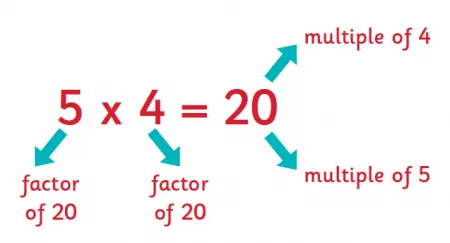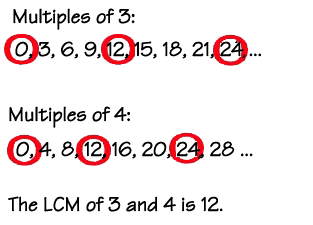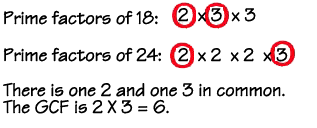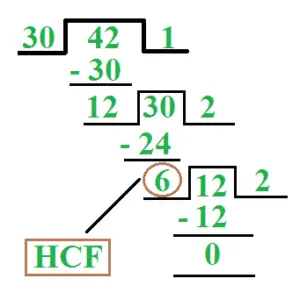LCM and GCF Calculator
Welcome to lcmgcf.com simple math calculator tool. You can calculate GCF known as greatest common factor or greatest common divisor (gcd) and LCM known as least common multiple or lowest common denominator (lcd).
The LCM and GCF calculator (also called the LCD and GCD finder) will determine the least common multiple and greatest common factor of a set of two to n numbers. You can also compute the LCM and GCF by hand or use the LCM calculator or the GCF calculator to find more detailed methods to compute these problems by hand.
Factors, LCM and GCF of two or more Numbers
Please Select a calculator below to start calculate Factors, LCM (LCD) or GCF (GCD)
- Prime Factorisation Calculator
- Factor Tree Calculator
- Common Factors Calculator
- Factoring Calculator
- LCM of two Numbers Calculator
- LCM of two or more Numbers Calculator
- LCM of Decimals Calculator
- LCM of Fractions Calculator
- LCM of 3 Numbers Calculator
- LCM of 4 Numbers Calculator
- LCM of 5 Numbers Calculator
- Least Common Multiple Calculator
- How to find LCM
- LCM and HCF Questions
- Percentage Increase Calculator
- x Out Of y as a percentage
- What is a Good Gpa Calculator
- What is the Highest Gpa Calculator
- How to Calculate Gpa Calculator
- How to Calculate Graded Calculator
- How To Raisa Gpa Calculator
- Grade Calculator
- Weighted Grade Calculator
- Gpa Scale 1.0
- Gpa Scale 2.0
- Gpa Scale 3.0
- Gpa Scale 3.9
- Gpa Scale 4.0
- What is the Average Gpa Calculator
- Number minus percent Calculator
- Number plus percent Calculator
- Percent as a decimal Calculator
- Second power Calculator
- Squared Calculator
- Third power Calculator
- Sum Calculator
- Square footage Calculator
- What is x percent of y Calculator
- What is the percent change from x to y Calculator
- X is what percent of y Calculator
- What is x minus y percent Calculator
- What is x plus y percent Calculator
- What percent of x is y Calculator
- How to get percentage Calculator
- Body fat Calculator
- Body mass index Calculator
- Percent growth Calculator
- Percentage rent Calculator
- Stock percent Calculator
- Percent to ratio Calculator
- LCD Calculator
- Least Common Denominator Calculator
- GCF of two or more Numbers Calculator
- Greatest Common Factor Calculator
- GCF of two Numbers Calculator
- GCF of Fractions Calculator
- GCF of Decimals Calculator
- GCD Calculator
- Greatest Common Divisor Calculator
- HCF Calculator
- HCF of 3 Numbers Calculator
- HCF of 4 Numbers Calculator
- HCF Using Euclid's deivision lemma Calculator
- Fraction as a Decimal Calculator
- Percentage Decrease Calculator
- Average Percentage Calculator
- College Gpa Calculator
- Final Grade Calculator
- Cumulative Gpa Calculator
- High School Gpa Calculator
- Gpa Scale Calculator
- Are your grades confidential Calculator
- Can I round up my Gpa Calculator
- Getting into College without a solid high school Gpa Calculator
- Gpa and Financial aid how your graded affect your student loans calculator
- Gpa and first Jobs Calculator
- What are Latin Honors Calculator
- What is Cum Laude Gpa Calculator
- What is Cumulative Gpa Calculator
- Skip Counting Calculator
- What is blank percent of blank Calculator
- Blank is what percent of blank Calculator
- What is the percent change from blank to blank Calculator
- What percent of blank is blank Calculator
- What is blank minus blank percent Calculator
- What is blank plus blank percent Calculator
- Blank percentage Calculator
- Add percentage Calculator
- Percent Change Calculator
- Percent pay rise Calculator
- Percent social security tax Calculator
- Percent savings Calculator
- Percentage discount Calculator
- Percentage division Calculator
- Percentage multiplication Calculator
- Percent slope Calculator
- Gross margin percentage Calculator
- Percent markup Calculator
- Percent of a percent Calculator
- Ordering Fractions Calculator Examples
Important Links
- LCM and HCF Formulas, Shortcuts and Tricks with Examples
- What is the difference between LCM and HCF?
- What is HCF with an example?
- What is LCM with an example?
- What is the GCF of 24 and 36?
- What is the formula for HCF and LCM?
- How can we find the LCM and HCF?
- What is Multiple?
- What is Factor?
LCM Calculator - LCM of two Numbers
The Least Common Multiple (LCM) is also referred to as the Lowest Common Multiple (LCM) and Least Common Divisor (LCD). For two integers x and y, denoted LCM(x,y), the LCM is the smallest positive integer that is evenly divisible by both x and y.
For example, LCM(2,3) = 6 and LCM(6,10) = 30.
GCF Calculator - GCF of two Numbers
The Greatest Common Factor (GCF) is also referred to as the Highest Common Factor (HCF) and Greatest Common Divisor (GCD). For two integers x and y, denoted GCF(x,y), the largest positive integer that divides evenly into two numbers with zero remainder.
For example, GCF(12,36) = 12 and GCF(42,64) = 2.
LCM of two or more Numbers Calculator
The LCM of two or more numbers is the smallest number that is evenly divisible by all numbers in the set.
For example, for the set of numbers 12, 24 and 36 the LCM = 72.
GCF of two or more Numbers Calculator
The GCF(GCD) of two or more numbers is the largest number that is evenly divisible by all numbers in the set with remainder zero.
For example, for the set of numbers 12, 24 and 36 the GCF = 12.
HCF Using Euclid’s Division Lemma
Euclid’s division algorithm is a technique to compute the Highest Common Factor (HCF) of two given positive integers. Recall that the HCF of two positive integers a and b is the largest positive integer d that divides both a and b.
For example, HCF (420, 130) = 10.
Factoring Calculator
The Factoring Calculator finds the factors and factor pairs of a natural number. Enter an positive integer number to find its factors.
For example, The 10 factors of 48 are: 1, 2, 3, 4, 6, 8, 12, 16, 24, 48.
Prime Factorisation Calculator
Find the prime factorization of a number. Works for natural numbers between 2 and 9007199254740991
Prime Factors of a Number 12 With Exponents = 22 x 3
Prime Factors of a Number 12 Without Exponents = 2 x 2 x 3
Factor Tree
A factor tree is a tool that breaks down any number into its prime factors. A certain number's prime factorization is the list of prime numbers or prime factors that you would multiply together to create that certain number.
For example, the factors of 32 are 1, 2, 4, 8, 16, 32.
LCM of Decimals
To find the L.C.M of the given numbers in which decimals are given, first of all we find out the L.C.M of numbers with out decimals. And then we see the number in which the decimal is given in the minimum digits from right to left. We put the decimal in our result which is equal to that number of digits.
For example, the L.C.M of 0.16, 5.4 and 0. 0098 = 2116.8
GCF of Decimals
To find the G.C.F of the given numbers in which decimals are given, first of all we find out the G.C.F of numbers with out decimals. And then we see the number in which the decimal is given in the minimum digits from right to left. We put the decimal in our result which is equal to that number of digits.
For example, the H.C.F. of 1.20 and 22.5 = 0.30
LCM of Fractions
Formula to find the LCM of two fractions is:
L.C.M of Fractions = LCM of the numerators/GCF of denominators
For example, 4/5 and 3/7 is 420
GCF of Fractions
Formula to find the GCF of two fractions is:
G.C.F of Fractions = GCF of the numerators/LCM of denominators
For example, 4/5 and 3/7 is 1/35
LCM and HCF Formulas, Shortcuts and Tricks with Examples
Factors and Multiples:
- If number p divided another number q exactly, we say that p is a factor of q.
- In this case, q is called a multiple of p.
Common Multiple :
A number which is exactly divisible by all the given numbers is “Common multiple”.
Least Common Multiple (LCM) :
The least number which is exactly divisible by all the given numbers is LCM.
Common Factor:
A number which divides all the given numbers exactly is “Common factor”.
Highest Common Factor (HCF):
The greatest number that divides all the given numbers exactly is “HCF”.
H.C.F by Method of Prime Factors:
(1) H.C.F or G.C.F of 18 and 24?
H.C.F by Method of Division:
(1) H.C.F of 30 and 42?
H.C.F and L.C.M of Fractions:
Co-primes: Two numbers are said to be co-primes if their H.C.F. is 1.
L.C.M and HCF Important Formulas
- Product of two numbers (First number x Second Number) = H.C.F. X L.C.M.
- H.C.F. of a given number always divides its L.C.M.
- To find the greatest number that will exactly divide x, y and z. Required number = HCF of x, y and z
- To find the Largest number that will divide x, y and z leaving remainders a, b and c respectively. Required number = HCF of (x -a), (y- b) and (z – c)
- To find the least number which is exactly divisible by x, y and z. Required number = LCM of x, y and z
- To find the least number which when divided by x, y and z leaves the remainders a, b and c respectively. It is always observed that, (x – a) = (y – b) = (z- c) = K (say). Required number = (LCM of x, y and z) – K.
- To find the least number which, when divided by x, y and z leaves the same remainder r in each case. Required number = (LCM of x, y and z) + r
- To find the greatest number that will divide x, y and z leaving the same remainder ‘r’ in each case. Required number = HCF of (x -r), (y- r) and (z- r)
- Largest number which divides x, y, z to leave same remainder = H.C.F. of (y-x), (z-y), (z-x).
- HCF of two prime numbers is always 1.
- To find the n-digit greatest number which, when divided by x, y and z,
(i) leaves no remainder (ie exactly divisible)
Following step wise methods are adopted.
Step I: LCM of x, y and z = L
Step II: L) n-digit greatest number (
Remainder (R)
Step III: Required number = n – digit smallest number + (L – R)
(ii) Leaves remainder K in each case
Following step-wise method is adopted.
Step I: LCM of x, y and z = L
Step II: L) n-digit greatest number (
Remainder (R)
Step III: Required number = (n-digit greatest number – R) + K - To find the n – digit smallest number which, when divided by x, y and z.(i) Leaves no remainder (i.e. exactly divisible)
Following steps are followed.
Step I: LCM of x, y and z = L
Step II: LCM) n-digit smallest number (
Remainder (R)
Step III: The required number = n-digit smallest number + (L – R)
(ii) leaves remainder K in each case.
Step I: LCM of x, y and z = L
Step II: LCM) n-digit smallest number (
Remainder (R)
Step III: Required number = n – digit smallest number + (L – R) + K - To find the least number which on being divided by x, y and z leaves in each case a remiander R, but when divided by N leaves no remainder, following step-wise methods are adopted.
Step I: Find the LCM of x, y and z say (L).
Step II: Required number will be in the form of (LK + R); where K is a positive integer.
Step III: N) L (Quotient (Q)
—–
Remainder (R0)
∴ L = N X Q + R0
Now put the value of L into the expression obtained in step II.
∴ required number will be in the form of (N × Q + R0) K + R
or, (N × Q x K) + (R0K + R)
Clearly N x Q x K is always divisible by N.
Step IV: Now make (R0K + R) divisible by N by putting the least value of K. Say, 1, 2, 3, 4….
Now put the value of K into the expression (LK + R) which will be the required number. - There are n numbers. If the HCF of each pair is x and the LCM of all the n numbers is y, then the product of n numbers is given by or Product of ‘n’ numbers = (HCF of each pair)n-1 × (LCM of n numbers).
Frequently Asked Questions on Factors, LCM (LCD) or GCF (GCD or HCF)
What is the difference between LCM and HCF?
LCM stands for Lowest Common Multiple, and HCF stands for Highest Common Factor.
The LCM of two integers is the smallest whole number that appears in both of their times tables, that is, the smallest integer that is a multiple of both numbers.
For example, the LCM of 4 and 6 is 12.
The HCF of two integers is the largest whole number that divides both numbers without leaving a remainder.
For example, the HCF of 16 and 32 is 16.
HCF or Highest Common Factor of two or more numbers is the greatest factor which divides the numbers. For example, 3 is the HCF of 3 and 6.
LCM or Least common multiple is the smallest number which is divisible by two or more given numbers. For example, LCM of 2 & 4 is 4.
By prime factorisation, we know; Factors of 36 = 1, 2, 3, 4, 6, 9, 12, 18 and 36; Factors of 24 = 1, 2, 3, 4, 6, 8, 12 and 24; HCF of (24,36) = 12
What is the formula for HCF and LCM?
Product of Two numbers = (HCF of the two numbers) x (LCM of the two numbers)
How can we find the LCM and HCF?
We can find LCM and HCF using prime factorisation and long division method
The basic definition of multiple is manifold. In math, the meaning of a multiple is the product result of one number multiplied by another number.
Ex: 7 x 8 = 56.
Here, 56 is a multiple of the integer 7.
Multiplying two whole numbers gives a product. The numbers that we multiply are the factors of the product.
3 × 5 = 15 therefore, 3 and 5 are the factors of 15.
This also means:
A factor divides a number completely without leaving any remainder.
For example: 30 ÷ 6 = 5, and there is no remainder. So we can say that 5 and 6 are the factors of 30.




